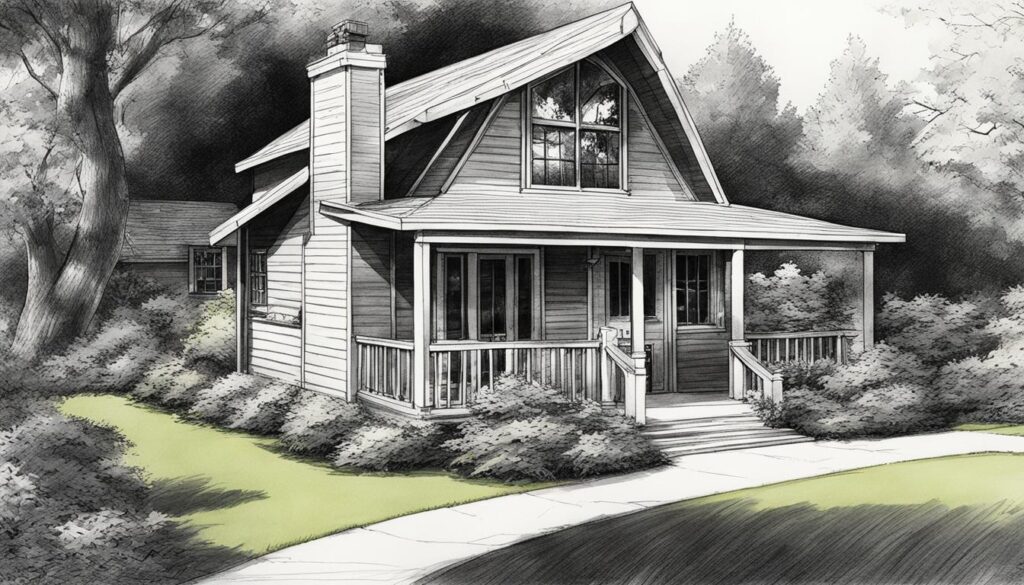Step-by-Step Guide to Building a Cozy Dog House

Welcome to our step-by-step guide on how to build a cozy dog house for your furry companion. Whether you’re a pet lover or a woodworking enthusiast, creating a DIY dog house can be a fun and rewarding project. Not only will it provide your dog with a comfortable outdoor shelter, but it will also showcase your craftsmanship skills. In this guide, we will walk you through the process of building your own DIY dog house, from assessing your dog’s needs to selecting the perfect design and gathering the required materials and tools.
Building a dog house is not only a practical endeavor but also an opportunity to unleash your creativity. With the right materials and tools, you can construct an outdoor shelter that blends seamlessly with your backyard. So, if you’re ready to embark on this woodworking adventure, let’s dive into the first section: Assessing Your Dog’s Needs. Here, we’ll guide you in tailoring the perfect dog haven that meets your pup’s specific requirements.
Assessing Your Dog’s Needs: Tailoring the Perfect Dog Haven
Before you start building, it’s important to assess your dog’s individual needs. Consider factors such as the size of your dog, breed-specific requirements, age-appropriate design, climate considerations, and the ideal location for the dog house. Taking these factors into account will ensure that you create a dog house that perfectly suits your furry friend’s needs.
Size Matters: Finding the Right Fit
When determining the size of your dog’s new haven, it’s crucial to choose a dog house that provides enough space for them to stand, turn around, and lie down comfortably. Measure the length and height of your dog to determine the appropriate dimensions for the dog house. Make sure to take into account your dog’s growth if they are still young and growing.
Breed-Specific Considerations: Catering to Unique Needs
Each dog breed has different characteristics, so it’s important to consider any breed-specific considerations when designing the dog house. For example, some breeds may have specific temperature requirements, such as long-haired dogs needing more ventilation in hot climates, or short-haired dogs needing extra insulation in cold climates. Research your dog’s breed to understand any specific needs they may have.
Age-Appropriate Design: Creating a Safe and Comfortable Space
Consider the age of your dog when designing their dog house. Puppies or senior dogs may benefit from an easy-to-access entrance, lower door threshold, or less steep ramps to accommodate their physical abilities. Additionally, providing a soft and comfortable bedding area can help older dogs with joint issues or arthritis.
Climate Considerations: Protecting Your Dog from the Elements
Take into account the climate in which you live when designing the dog house. If you reside in an area with extreme temperatures, consider adding insulation or ventilation to regulate the temperature inside the dog house. In colder climates, insulation can help retain heat, while in warmer climates, proper ventilation can provide airflow to keep your dog cool.
Ideal Location: Finding the Perfect Spot
Choose an ideal location for the dog house that provides shelter from the wind, rain, and direct sunlight. Consider placing the dog house in a shaded area during hot summers and away from outdoor elements such as sprinklers or gutter runoff. Providing a raised platform can also help prevent moisture from seeping into the dog house.
By considering your dog’s size, breed-specific requirements, age-appropriate design, climate considerations, and ideal location, you can create a dog house that meets your furry friend’s needs and provides a cozy and comfortable haven for them.
Selecting the Perfect Design
When it comes to dog house designs, there are plenty of options to choose from. From classic pitched-roof houses to modern designs with flat roofs, finding the perfect design for your furry friend is essential. But how do you know which design is right for your dog? Consider factors such as insulation, ventilation, and ease of cleaning when making your selection.
Insulation is crucial for keeping your dog warm during the colder months. Look for a design that incorporates insulation materials or offers the option to add insulation. This will help maintain a comfortable temperature inside the dog house and protect your pup from the elements.
Ventilation is another important consideration. A well-ventilated dog house allows for proper air circulation, preventing the buildup of moisture and stale air. Look for designs that include vents or windows to ensure a fresh and comfortable environment for your pet.
Ease of cleaning is often overlooked but essential for maintaining a hygienic dog house. Look for designs that offer removable panels or easy-access doors to make cleaning a breeze. A dog house with a removable roof, for example, can make it easier to reach all areas and keep everything tidy and fresh.
Remember, your dog’s comfort and well-being should be at the forefront when selecting a design. Take into consideration their specific requirements and preferences to create a space they’ll love.
To help you make an informed decision, below is a table comparing different dog house designs based on insulation, ventilation, and ease of cleaning:
| Design | Insulation | Ventilation | Ease of Cleaning |
|---|---|---|---|
| Traditional Pitched-Roof House | Medium | Good | Fair |
| Contemporary Design with Flat Roof | High | Good | Excellent |
| Modular Insulated Dog House | High | Excellent | Excellent |
Explore and compare these different designs to find the one that best meets your dog’s needs while also aligning with your preferences. Remember, a well-designed dog house will provide a comfortable and safe space for your canine companion to relax and enjoy.
Gathering the Required Materials and Tools
Before you begin construction, it’s essential to gather all the necessary materials and tools for building your DIY dog house. Having everything ready will make the construction process much smoother and more efficient.
To ensure the structural integrity and durability of your dog house, you’ll need the following materials:
- Plywood: This sturdy and versatile material is perfect for constructing the walls, floor, and roof of the dog house.
- Pressure-treated lumber: Use pressure-treated lumber for the framing and support of the dog house. It is resistant to rot, decay, and insect damage, ensuring the longevity of your creation.
- Roofing materials: Choose appropriate roofing materials such as asphalt shingles, metal sheets, or roofing tiles to protect the dog house from the elements.
- Insulation: Insulating the dog house is vital for providing comfort and warmth. Consider using foam panels or fiberglass insulation to regulate the temperature inside.
- Paint or stain: Applying a protective coat of paint or stain will not only enhance the aesthetic appeal of your dog house but also protect it from weathering and moisture.
In addition to the materials, you’ll need a variety of tools to complete the construction:
- Saw: A quality saw is essential for cutting plywood and lumber to the desired dimensions.
- Hammer: Use a hammer for driving nails and securing the different components of the dog house.
- Measuring tape: Accurate measurements are crucial for ensuring proper fit and alignment. A measuring tape will be your best friend throughout the construction process.
- Drill: A drill will come in handy for making pilot holes and assembling the various parts of the dog house with screws or nails.
- Level: Ensuring that your dog house is level during construction will result in a sturdy and well-balanced structure.
- Paintbrushes: Use paintbrushes for applying paint or stain to the dog house. Different brush sizes will be helpful in reaching different areas.
- Protective gear: Don’t forget to wear safety goggles, gloves, and a dust mask to protect yourself during the construction process.
By gathering all the required materials and tools beforehand, you’ll be well-prepared to embark on your DIY dog house construction journey.
Building a Solid Foundation: Crafting Stability and Insulation
In order to ensure the stability and insulation of your dog house, it is crucial to build a solid foundation. The foundation will provide a sturdy base for the structure and help protect your furry friend from the elements. Here are some important considerations when it comes to foundation materials, layout, and insulation:
Foundation Materials
Choosing the right foundation materials is essential for the longevity and structural integrity of the dog house. Two commonly used options are pressure-treated lumber and concrete blocks.
| Foundation Materials | Description |
|---|---|
| Pressure-Treated Lumber | Pressure-treated lumber is resistant to rot, decay, and insect damage. It provides a solid and durable foundation for your dog house. |
| Concrete Blocks | Concrete blocks offer stability and can easily be adjusted to create a level foundation. They are a popular choice for larger dog houses. |
When selecting your foundation materials, consider factors such as the size of your dog house, the weight it will need to support, and your local climate conditions.
Foundation Layout
The layout of the foundation is crucial for ensuring a stable and level dog house. Take the time to carefully plan and mark the layout before starting the construction process. Use a measuring tape and level to ensure accuracy.
If you’re using concrete blocks, lay them out in a grid pattern, evenly spaced and leveled. This will distribute the weight of the dog house evenly and provide a solid base for the structure.
Insulation Considerations
Insulating the foundation can help keep your dog house warm during colder months. Insulation can be added by placing foam board insulation panels beneath the foundation or using insulation materials specifically designed for foundations.
Insulation considerations are especially important if you live in a colder climate or if your dog spends extended periods of time outdoors. It will provide an additional layer of protection against the cold and keep your furry friend cozy.
By paying attention to the choice of foundation materials, the layout, and considering insulation, you can ensure a solid foundation for your dog house that provides stability and protection against the elements.
Constructing the Walls and Roof: Building the Shelter Structure
The walls and roof are essential components of your dog house’s structure. By using suitable wall and roof materials, you can ensure durability and comfort for your furry friend. Here’s a step-by-step guide on how to construct the walls and roof of your dog house:
1. Wall Construction
To begin, carefully choose the materials for your walls. Common options include plywood or cedar, both known for their durability and resistance to outdoor elements. Cut the wall panels to the desired size and securely assemble them using nails or screws.
Tip: Insulation is crucial for maintaining a comfortable temperature within the dog house. Consider adding foam insulation between the wall panels to provide additional warmth during colder months.
2. Roof Framework and Material Application
Creating a stable roof framework is essential to protect your dog from the elements. Use sturdy lumber beams or trusses to construct the framework, ensuring proper support for the roof.
Next, apply the roofing material of your choice, such as shingles or metal sheets, to the roof framework. Secure the roofing material in place using appropriate fasteners, such as nails or screws, ensuring a weather-tight seal.
Remember to follow the manufacturer’s instructions for proper installation of the roofing material, including any necessary underlayment or flashing.
3. Ventilation and Accessibility
Ventilation is crucial for maintaining fresh air circulation within the dog house. Cut small openings near the roof or at the top corners of the walls to provide proper airflow. These openings should be covered with a mesh or screen to prevent pests from entering.
Additionally, ensure easy accessibility for your dog by cutting a doorway in one of the walls. The door should be large enough for your dog to comfortably enter and exit the dog house.
4. Weather-Resistant Finish
A weather-resistant finish is essential to protect the walls and roof from moisture damage. Apply a suitable paint or stain to the exterior surfaces, following the manufacturer’s instructions for proper application.
Note: Choose paint or stain that is pet-safe and weather-resistant to ensure the longevity of your dog house.
By following these steps, you can construct sturdy walls and a reliable roof for your dog house. The materials chosen, proper insulation, ventilation, and weather-resistant finish will help create a comfortable and safe shelter for your beloved pet.
Conclusion
Building your own DIY dog house is a fun and rewarding project that will provide your furry friend with a cozy outdoor shelter. By following this step-by-step guide, you can create a comfortable and secure space for your dog to relax and unwind.
Throughout the construction process, it is crucial to consider your dog’s individual needs. Factors such as size, breed-specific requirements, and climate considerations should be taken into account to ensure the dog house meets all your pet’s needs.
Using the right materials and tools is essential in creating a durable and long-lasting dog house. From plywood and pressure-treated lumber to roofing materials and insulation, each component plays a vital role in the construction of a sturdy shelter. Don’t forget to add a weather-resistant finish to protect the dog house from the elements.
With the right planning, preparation, and execution, you can successfully build your DIY dog house and provide your furry companion with the perfect outdoor sanctuary. Enjoy the process and cherish the moments you and your dog will share in their new, custom-made shelter.
FAQ
Is it difficult to build a DIY dog house?
Building a DIY dog house can be a challenging project, especially for beginners. However, with the right tools, materials, and guidance, it is achievable for woodworking enthusiasts of all skill levels.
How do I determine the size of the dog house?
The size of the dog house should be based on the size of your dog. Measure your dog’s height, length, and width, and ensure that the dog house is spacious enough for them to comfortably stand, turn around, and lie down. It’s always better to err on the side of a slightly larger dog house.
What should I consider when choosing a location for the dog house?
When selecting a location for the dog house, consider factors such as shade, shelter from wind and rain, and proximity to your home. Choose an area that is well-drained, elevated to prevent flooding, and away from external hazards or dangers.
Do I need to insulate the dog house?
Insulating the dog house is highly recommended, especially if you live in an area with extreme temperatures. Insulation helps regulate the temperature inside the dog house, keeping it warm in winter and cool in summer.
How do I ensure proper ventilation in the dog house?
Ventilation is crucial to maintaining good air circulation and preventing condensation inside the dog house. You can create ventilation openings near the roof or on the sides of the dog house, ensuring they are protected from rain and wind. Additionally, incorporate a small vent or venting system for improved airflow.








